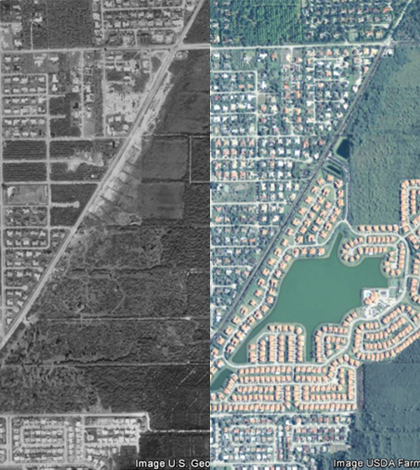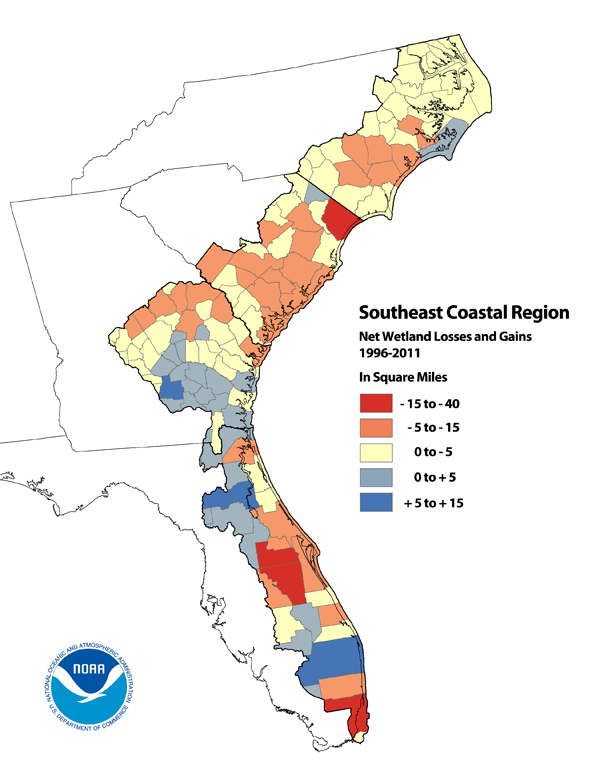New NOAA land cover analysis show 15 years of significant development along U.S. coasts

This development in Miami shows an example of land cover change from 1994 to 2010 (Credit: NOAA)
Quite a bit has changed from the ‘90s to the ‘10s. Sweaters only have room for one person, computers can be worn on your wrist or face, and children can no longer fathom analog tape. These examples may be silly, but shifts in culture and social structure can actually alter the makeup of our physical environment over time. The National Oceanic and Atmospheric Administration has catalogued this in the form of a publicly available land cover atlas, the most recent iteration of which reveals changes to the U.S. coastal landscape between 1996 and 2011.
The Coastal Change Analysis Program, or C-CAP, maps various types of land cover along the U.S. coast, including wetlands, forests, urban development and other landscape features. A contributing party to the Multi-Resolution Land Characteristics Consortium, NOAA’s findings are incorporated into the National Land Cover Database, a similar analysis that examines the entire continental U.S.
“Land cover maps highlight what covers the Earth’s surface,” said Nate Herold, a physical scientist with NOAA . “These maps can provide a specific and useful perspective for local land use decision makers who help develop land use plans, regulations and practices.”
The newest land cover study highlights a few interesting trends. During the 15 year analysis period, 64,975 square miles of coastal land have changed in some regard. Over 1,500 square miles of wetland disappeared between 1996 and 2011, and forest cover shrunk by 6.1 percent. Urban development had a major impact on both forests and wetlands, receding the latter by an average daily rate of 61 football fields. Somewhat surprisingly, wetlands surrounding the Great Lakes showed growth, likely due to recent drought and low water levels.

Wetland gains and losses in the Southeast coastal region (Credit: NOAA)
Landsat satellites capture the images that compose C-CAP charts at a resolution of 30 meters per pixel. Higher resolution imagery is available for select geographies, according to the NOAA Digital Coast website.
Herold believes that knowledge of land cover changes will help C-CAP users better understand the effects of past management decisions and reveal areas of concern that may require future intervention.
“After all,” Herold said, “people are much more able to make informed decisions when they understand current conditions and past trends.”
But he also recognizes the inherent limitations of C-CAP. Other products that focus on a regional or local scale can provide a more detailed look at land cover change. Herold said the program’s biggest challenges are turning raw data into a useable product, and educating users about the data’s capabilities.
“We often say that we have both the blessing of being very widely applicable and the curse of rarely providing 100 percent of the information needed to answer any given question,” Herold said.
All C-CAP data is available to view or download at NOAA’s Coastal Services Center website. More resources will be made available in the coming months, including a C-CAP comparison tool and regional change summary reports, Herold said.
Top image: This development in Miami shows an example of land cover change from 1994 to 2010 (Credit: NOAA)





0 comments